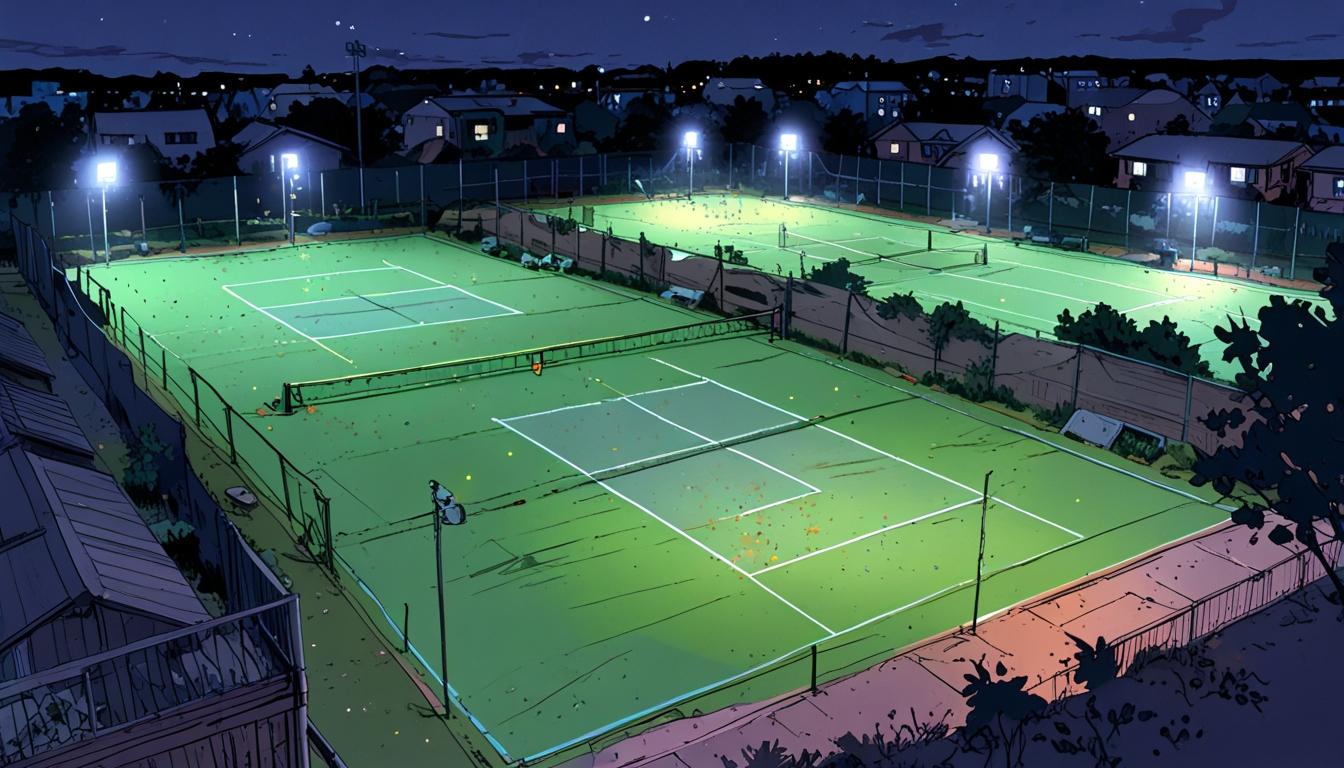Controversy Erupts Over Upgraded Tennis Courts in Norwich
In a city known for its rich tennis heritage, being the home to champion Alfie Hewett, the recent uproar over the City of Norwich School’s upgraded tennis courts is disheartening for many. This ongoing dispute sharply highlights the friction between community facilities and local residents' peaceful enjoyment of their homes.
After an upgrade in 2021, funded in part by the National Tennis Association, the five all-weather courts at the City of Norwich School were intended to serve both students and the broader community. Equipped with floodlights, the courts also facilitate netball and basketball. However, these upgrades have instead become a source of distress for neighbouring residents, who describe the noise levels as “unbearable” and claim the floodlights intrude into their homes. The governing bodies of tennis in Norwich had positioned such facilities as a boon to community engagement, yet now it seems to have sparked a differing sentiment among local residents.
Several neighbours have come forward with allegations of antisocial behaviour linked to students using the courts. Reports include incidents where schoolboys have reportedly broken into private gardens to skip classes, raising concerns about security and privacy. One resident recounted how his shed was invaded, while another highlighted damage to hedges resulting from students attempting to hide or play near his property. Such scenarios pose questions about the management of the area surrounding the school’s facilities.
Community access to the courts is currently restricted to set hours—4.30pm to 7pm on weekdays and 9am to 1pm on weekends. However, plans to extend these hours to 8.30pm on weekdays, along with longer access times on Saturdays and Sundays, have exacerbated tensions. This proposed change was met with outrage from locals, particularly from those like Keith Philpott, who expressed frustration at the school’s reluctance to implement measures to mitigate noise and light disruption. Philpott argued that proper shields for the floodlights should have been installed to redirect glare away from homes.
Despite the complaints, the school administration maintains that they are taking residents' concerns seriously. A spokesperson noted the prompt adjustments made to the floodlight heights after a planning oversight and mentioned ongoing evaluations to potentially install an acoustic fence aimed at mitigating noise complaints.
Yet, residents like Shirley and Bob Hocking, who live in close proximity to the facilities, are apprehensive that these measures may be too little, too late. Shirley described the constant disruption, stating, “The language is appalling, the noise is constant, and the lights shine right into our kitchen” while her husband detailed the challenges faced by their damaged hedge due to students engaging in reckless behaviour.
In a reflection of how community projects can sometimes miss the mark, this situation echoes previous controversies in Norwich, notably the uproar following the replacement of grass tennis courts with all-weather surfaces in Heigham Park. That instance sparked a series of protests from local residents and environmental advocates who valued the green spaces being sacrificed for upgraded sporting facilities.
Similarly, the recent planning application concerning the City of Norwich School’s court use drew considerable public interest, with a total of 34 objectors weighing in against the proposal compared to just eight supporting it. While planning officers initially recommended its approval, further legal threats have prompted delays. This hesitance reflects an ongoing struggle in community governance where local needs sometimes clash with institutional decisions.
As residents call for transparency and communication from the school and its governing body, many like Philpott fear that their quality of life continues to be undermined. He remarked, “If the school doesn’t care about its reputation within the local community... then the wider people of Norwich deserve to know what is happening.”
While the tennis courts were envisioned as a community asset, the voices of dissent underline a critical need for dialogue and respect between institutions and the residents they are meant to serve. As the dispute rages on, the hope for a resolution remains uncertain, casting a shadow over the future of tennis in Norwich and the well-being of its communities alike.
Reference Map:
- Paragraph 1 – [1], [2]
- Paragraph 2 – [1], [2]
- Paragraph 3 – [1], [2]
- Paragraph 4 – [1], [2]
- Paragraph 5 – [1], [2]
- Paragraph 6 – [1], [6]
- Paragraph 7 – [1], [2]
- Paragraph 8 – [1], [3]
- Paragraph 9 – [1], [2]
Source: Noah Wire Services
